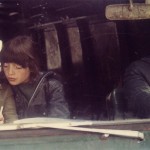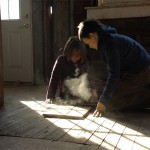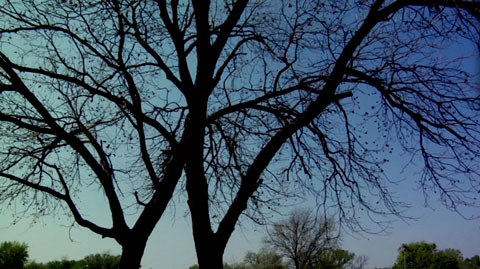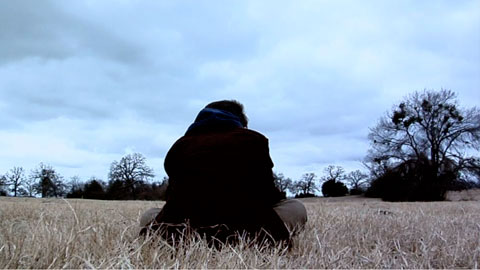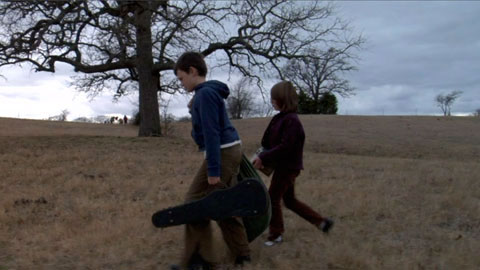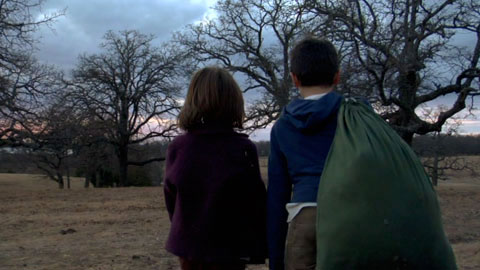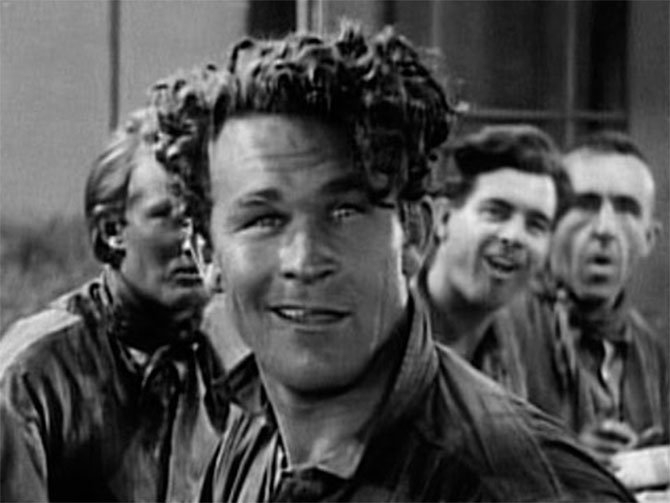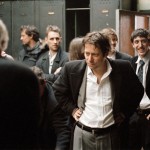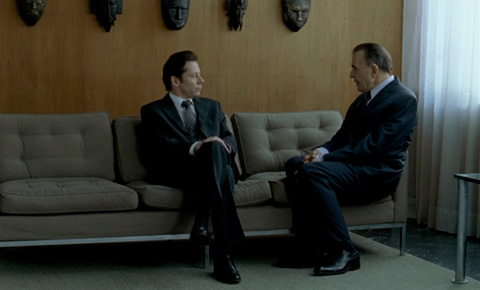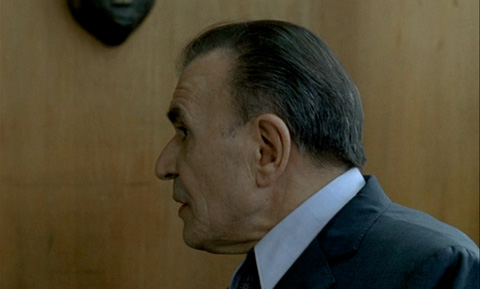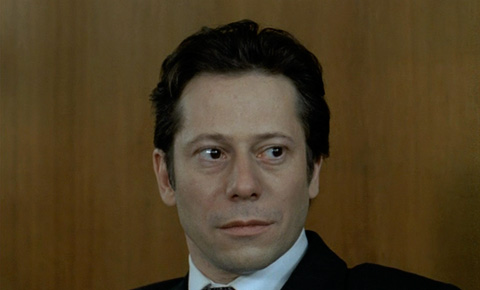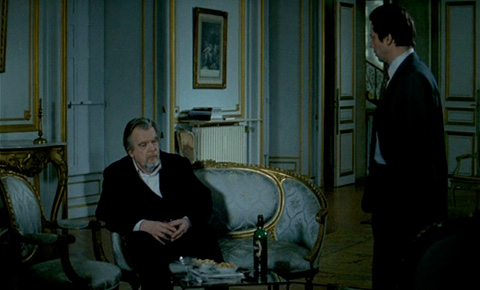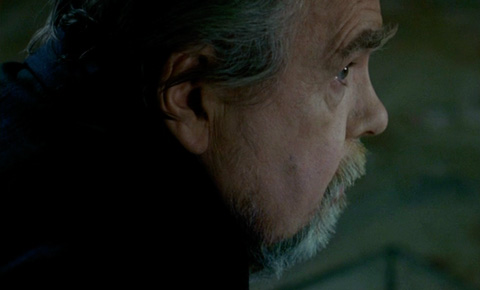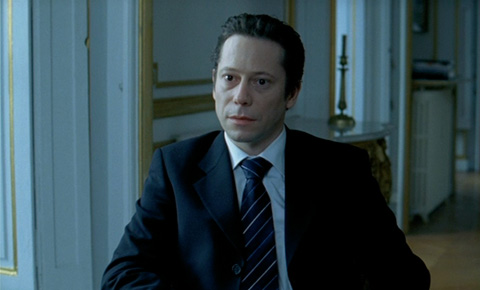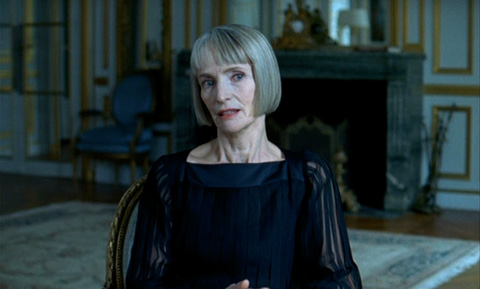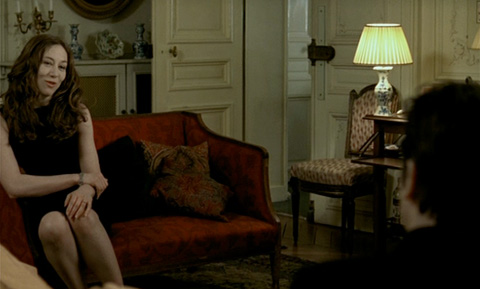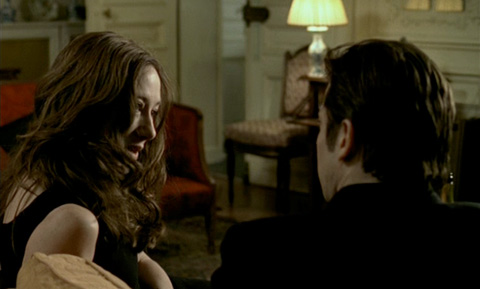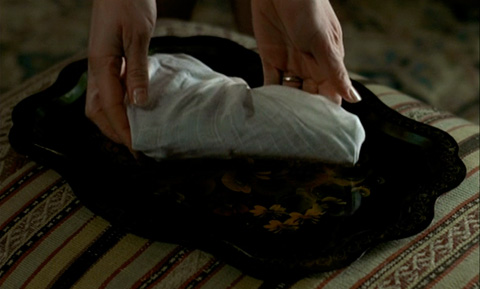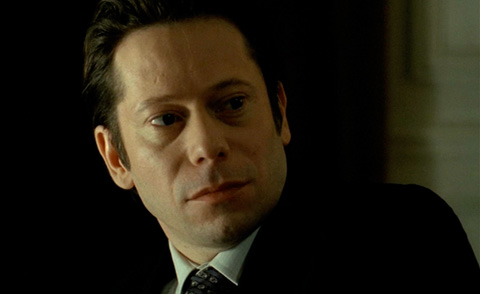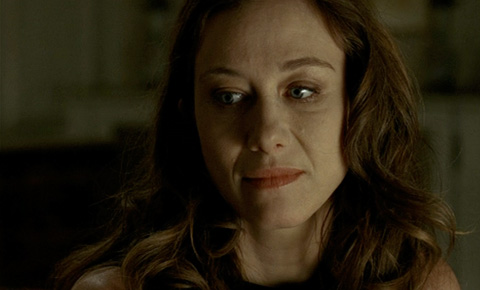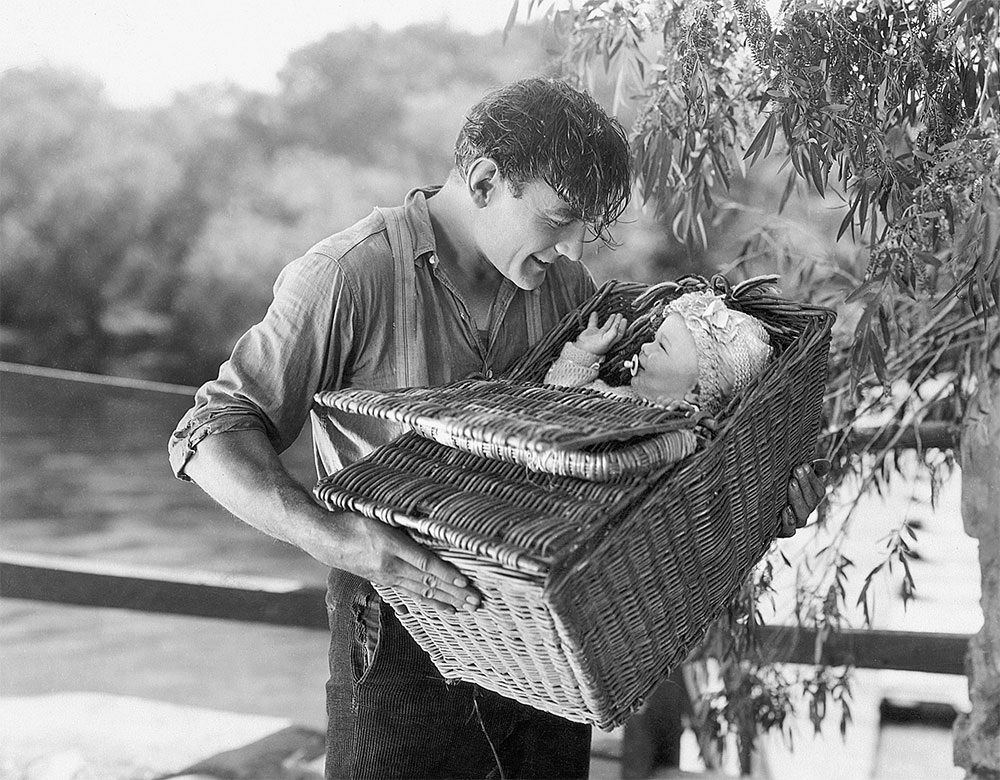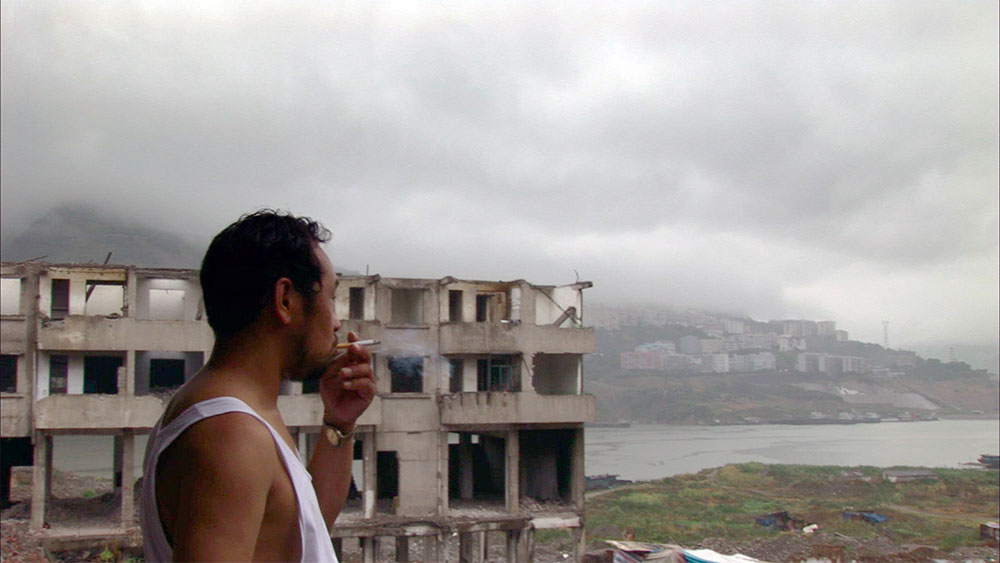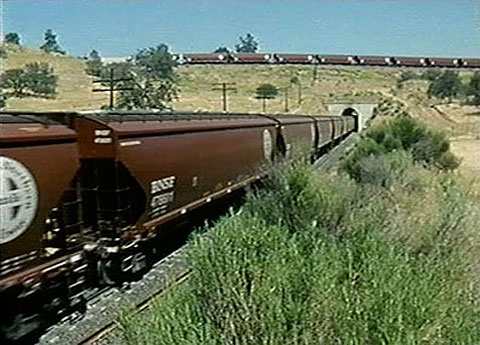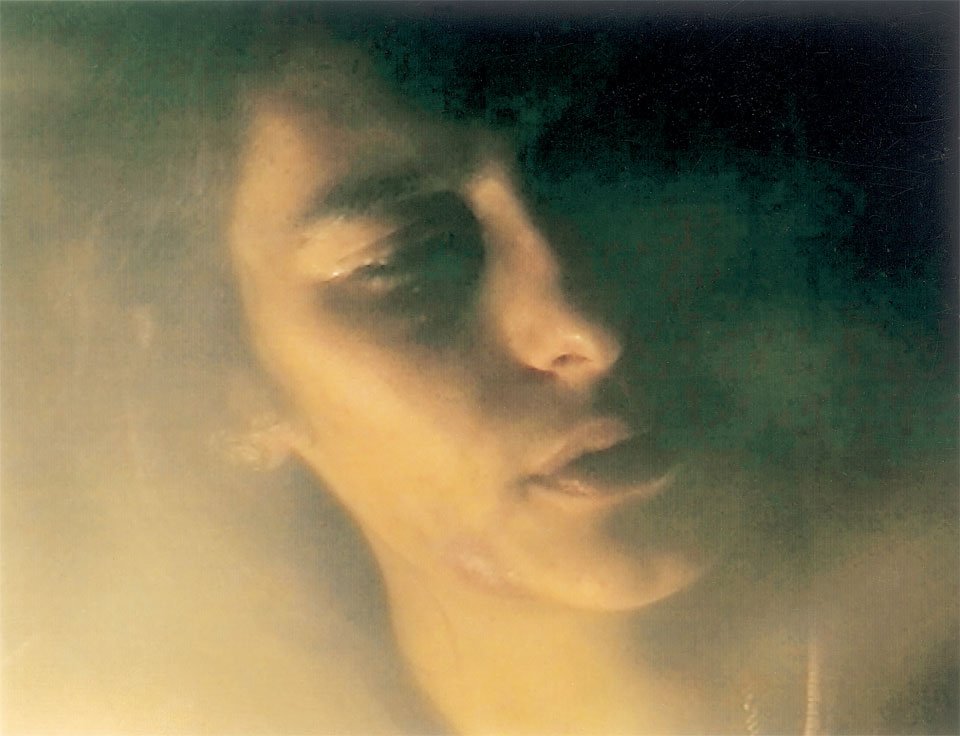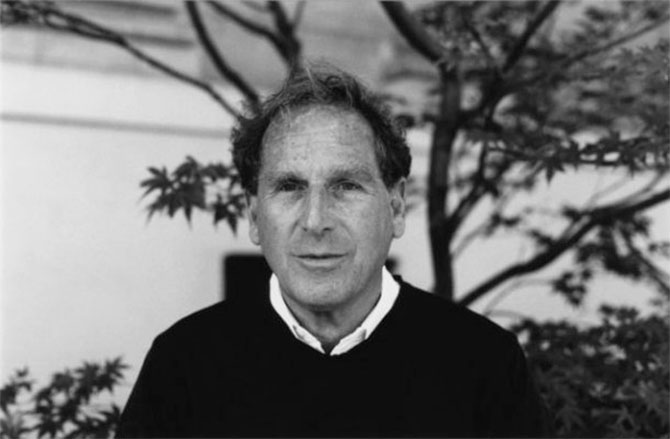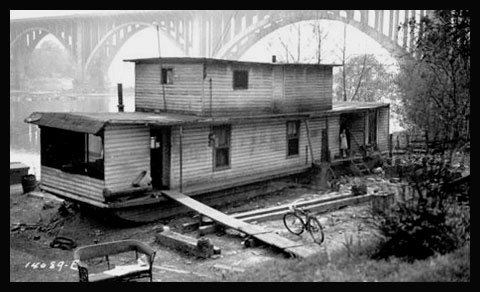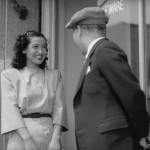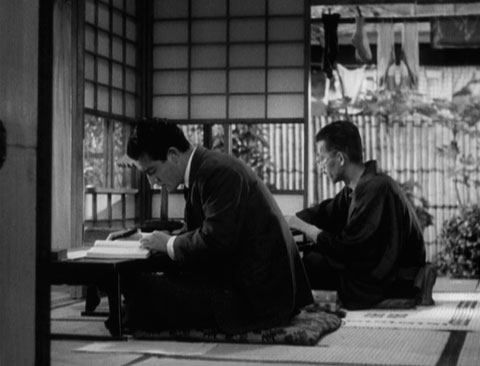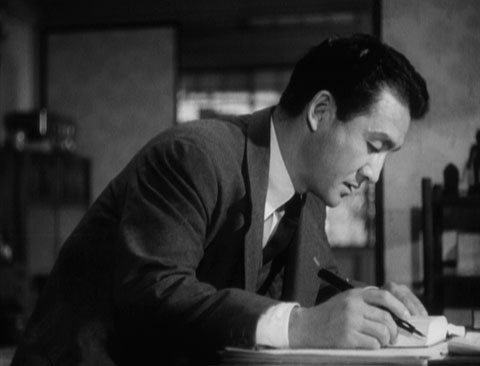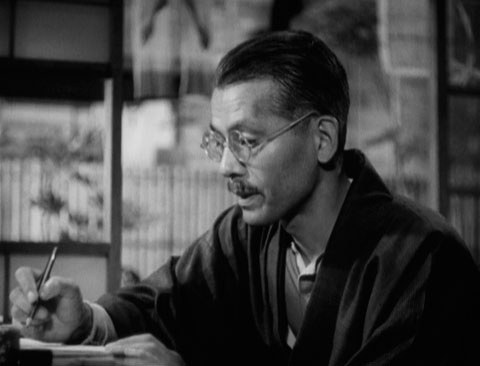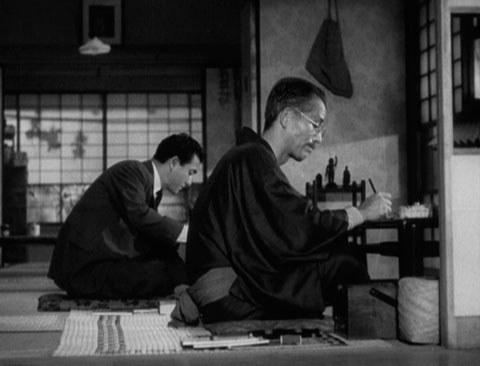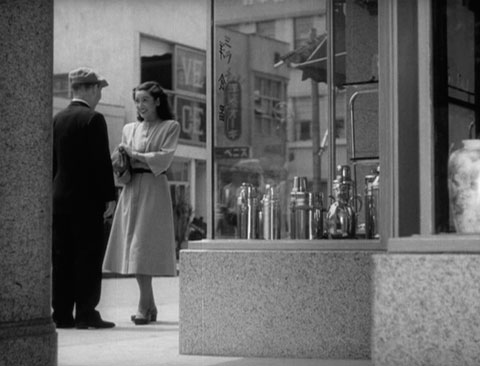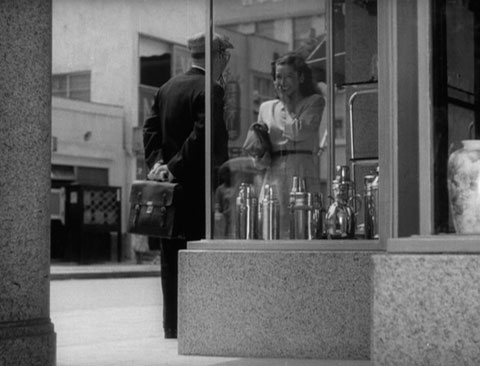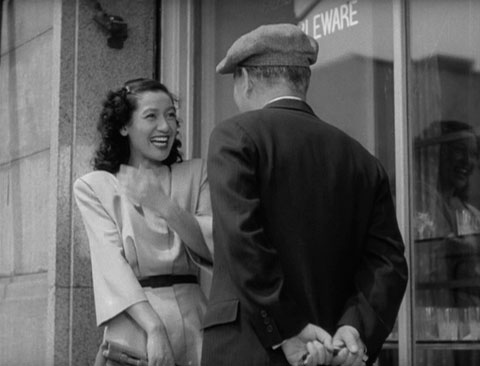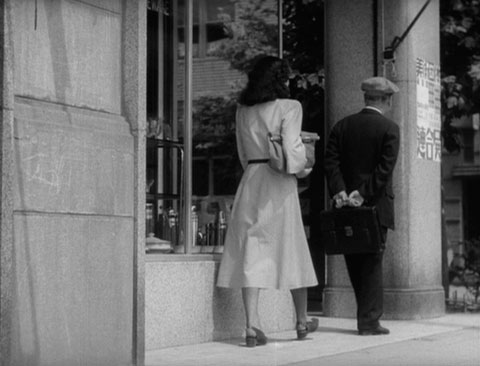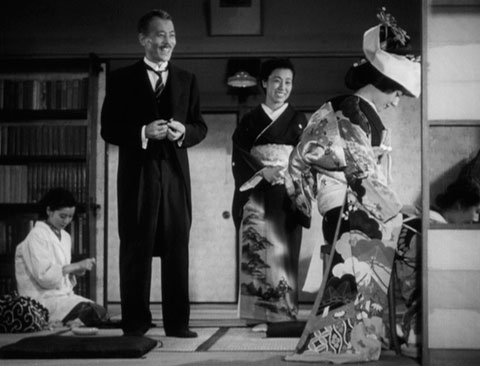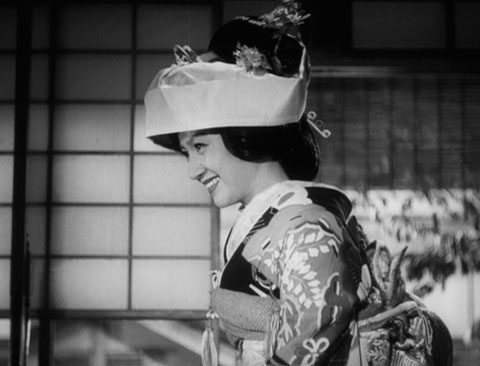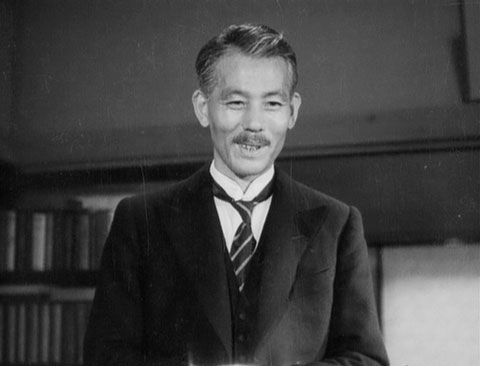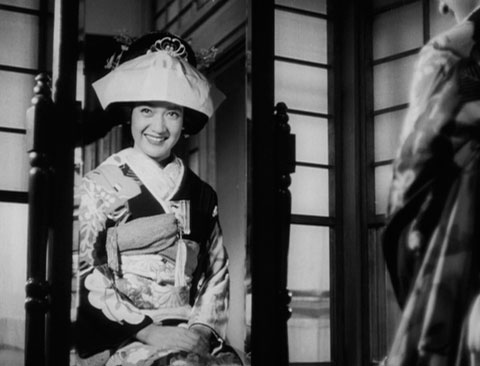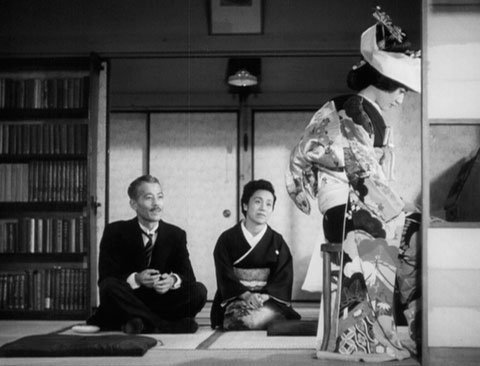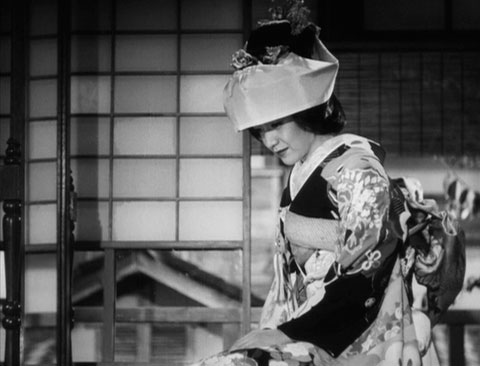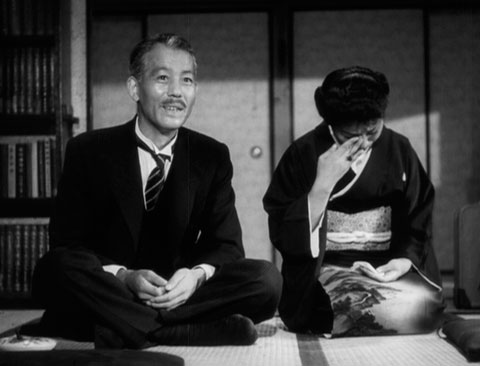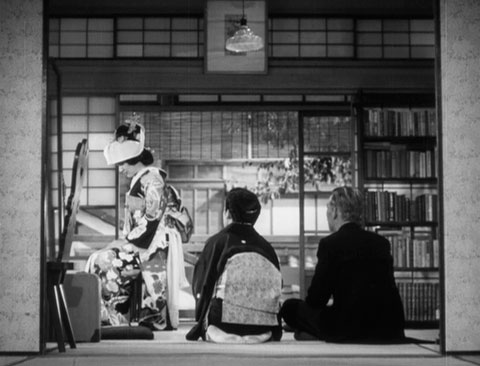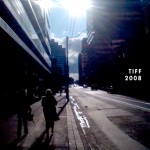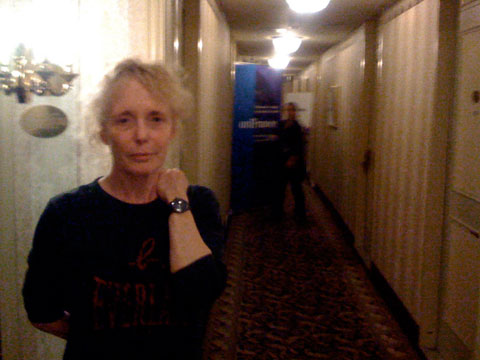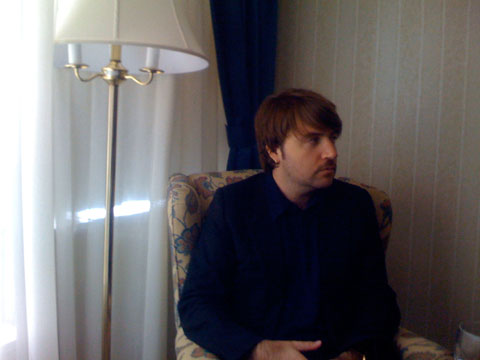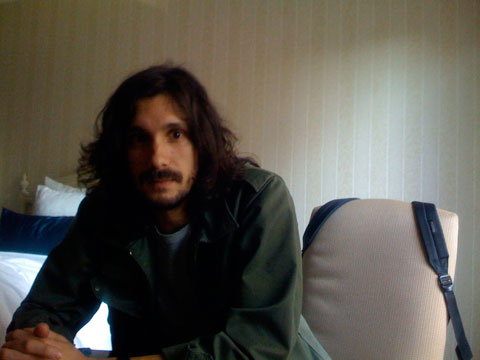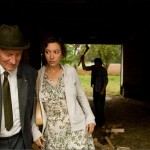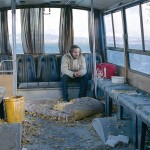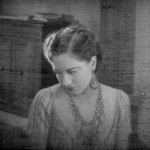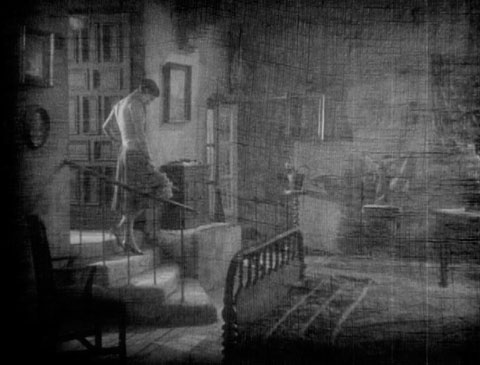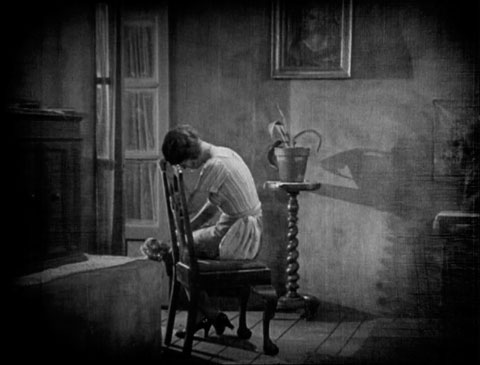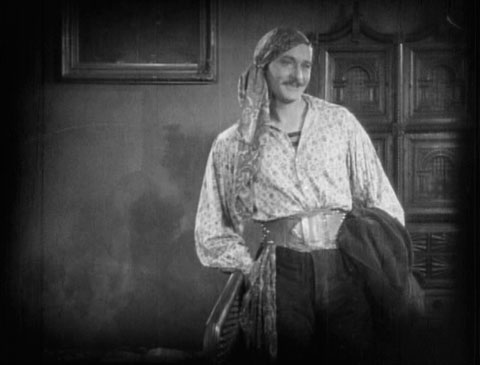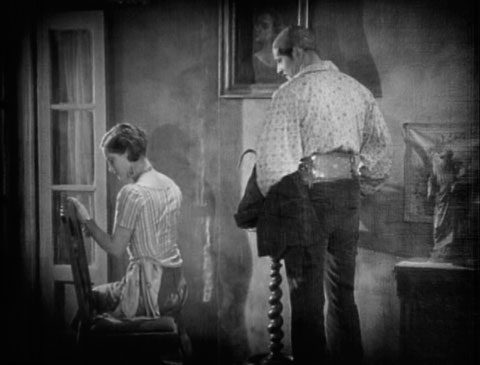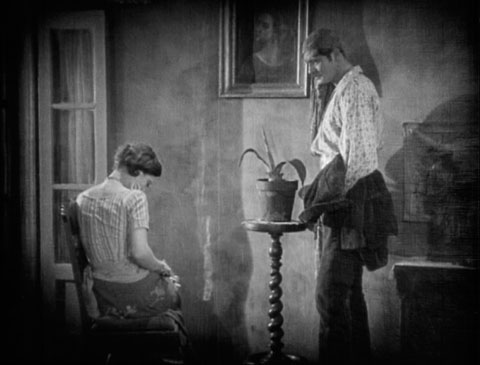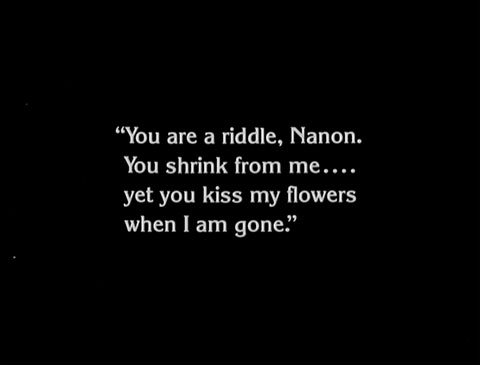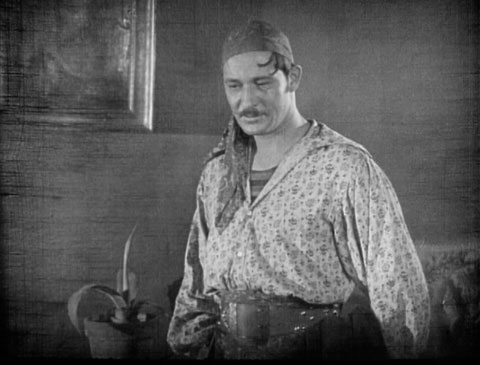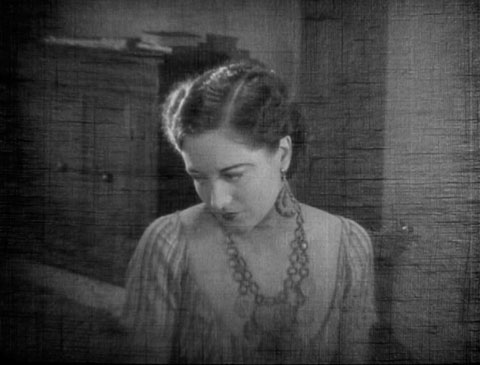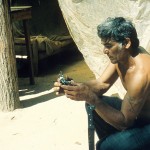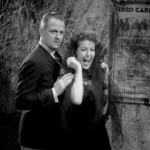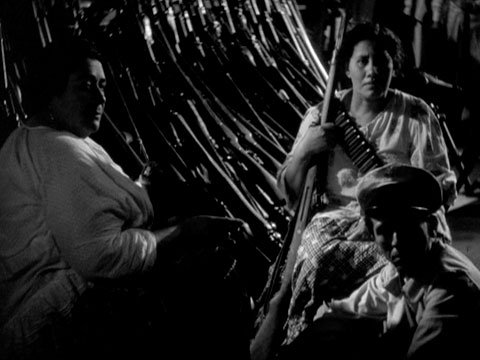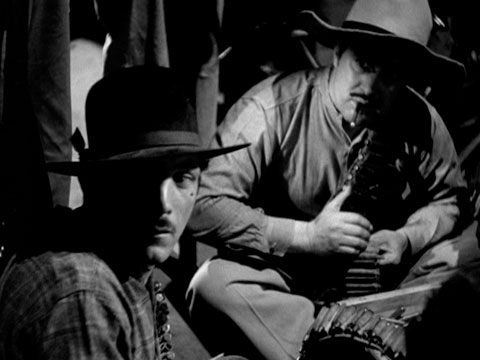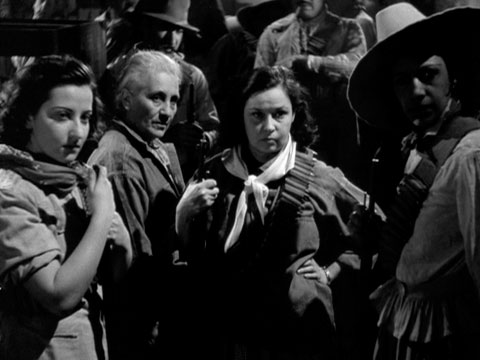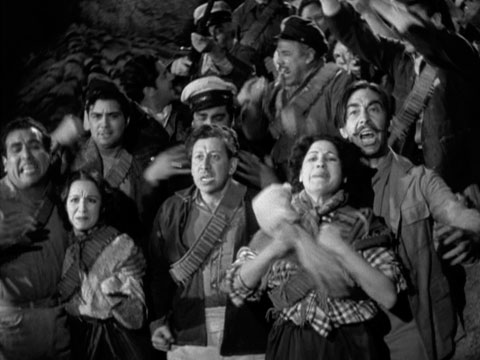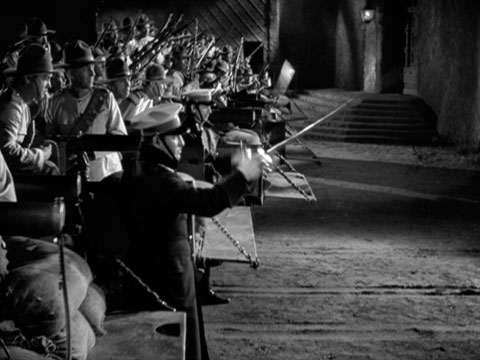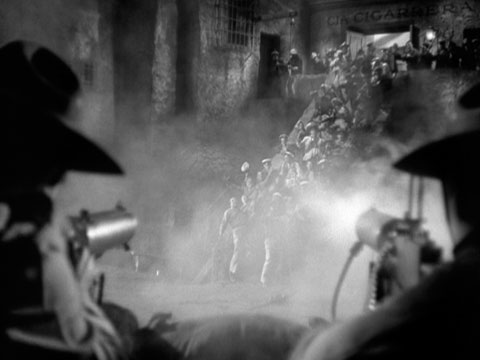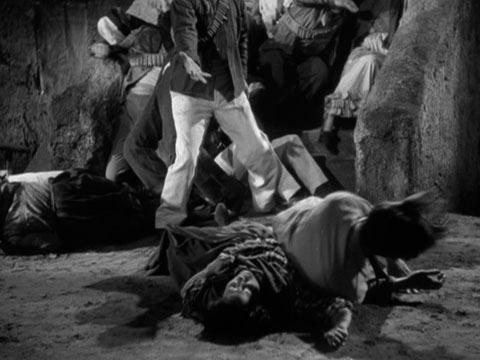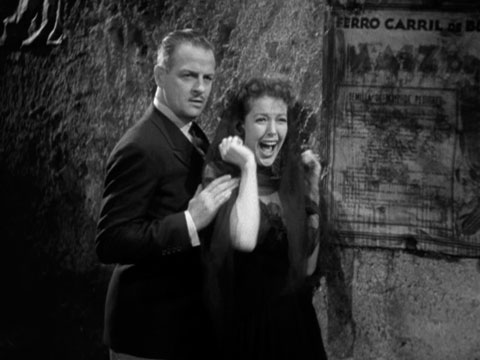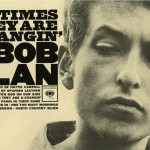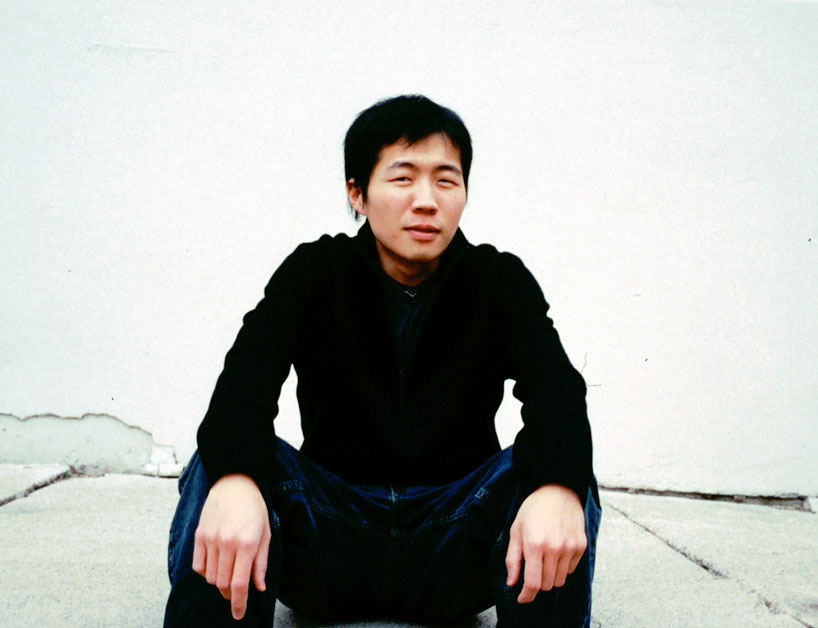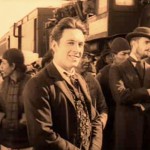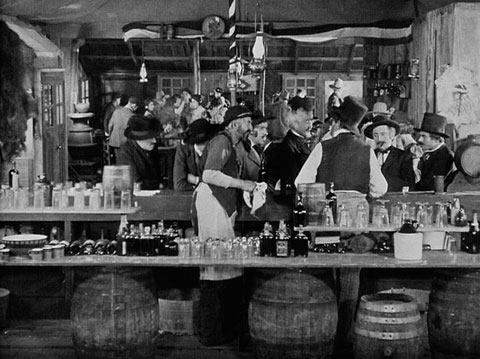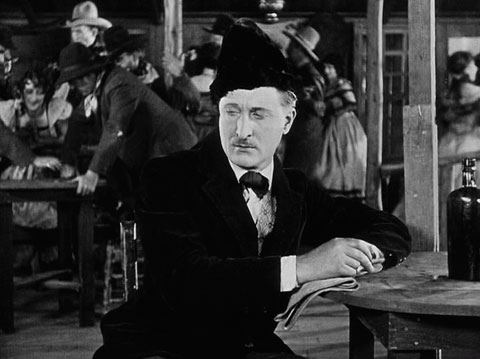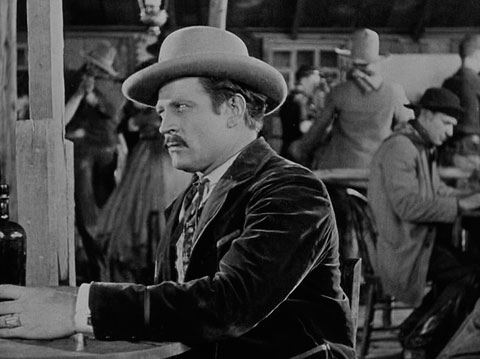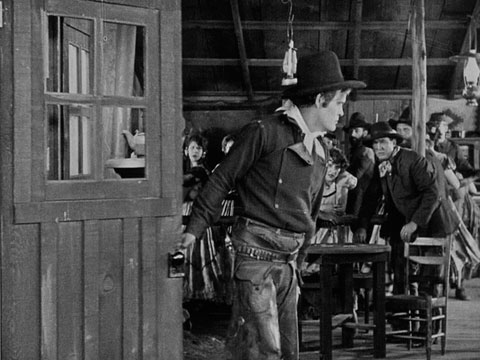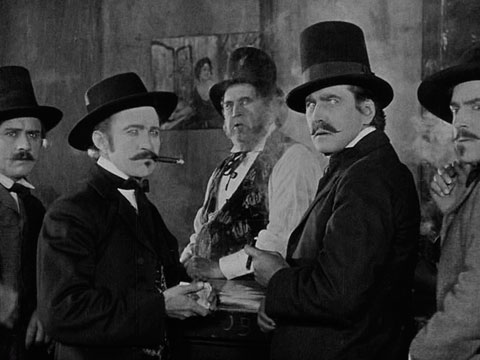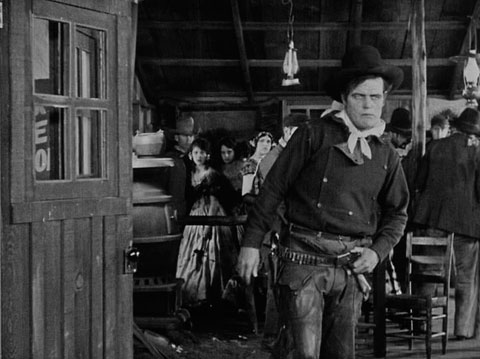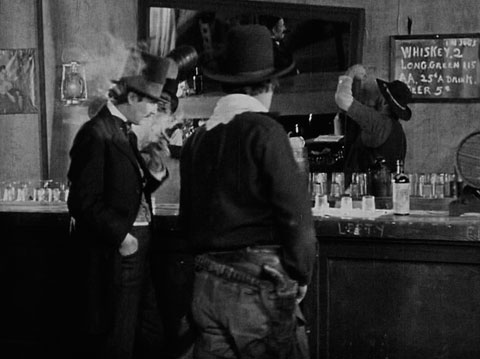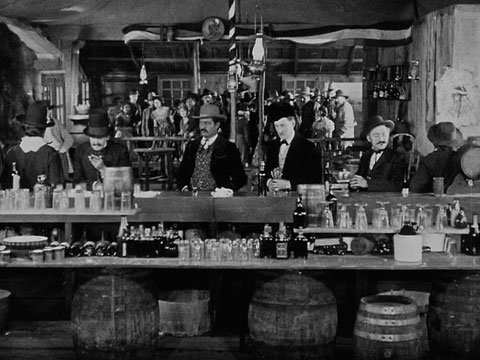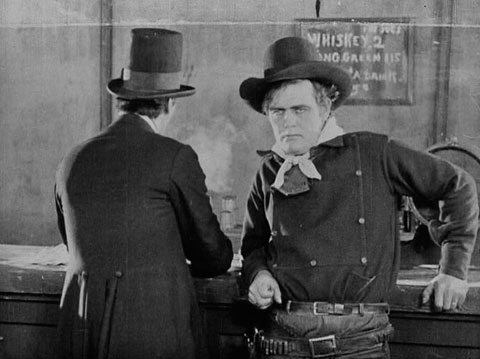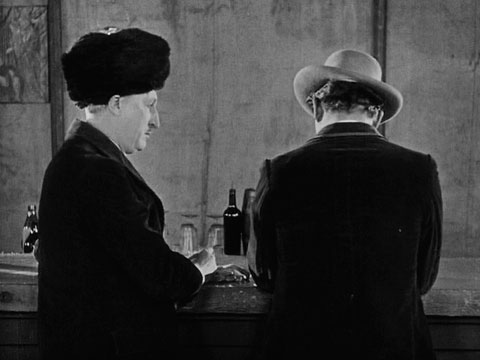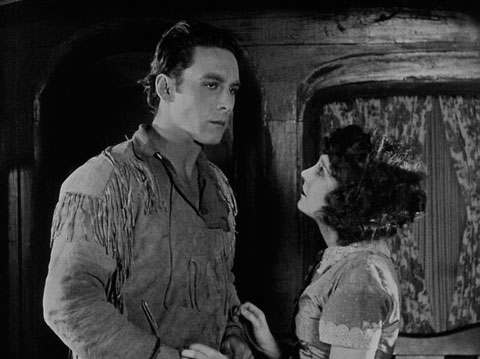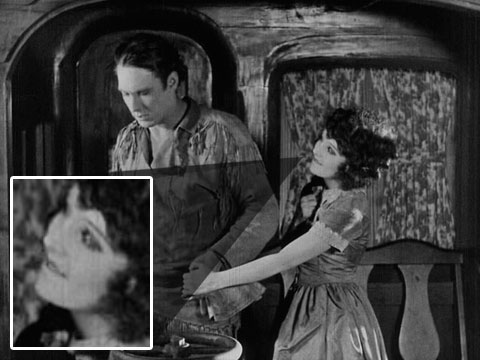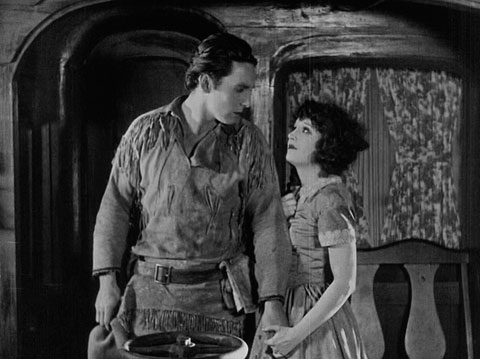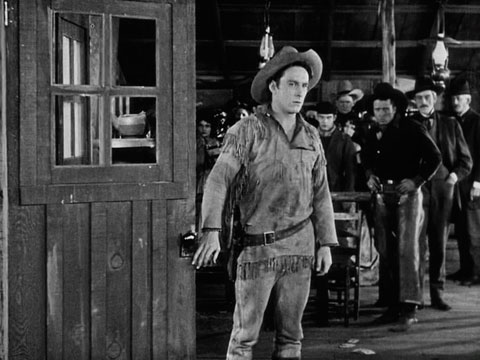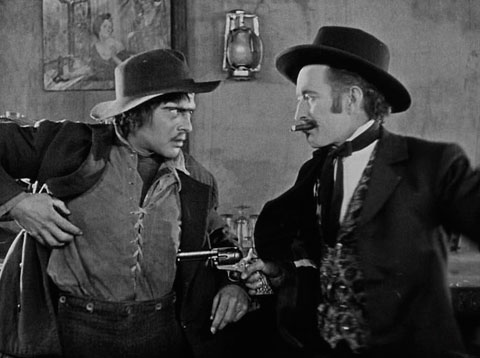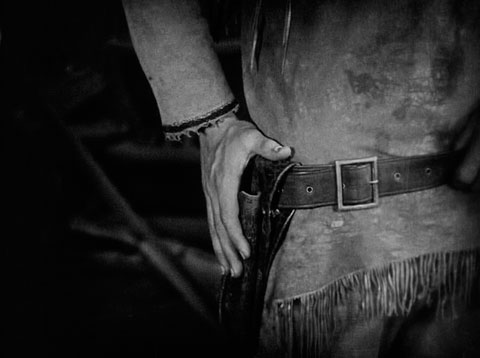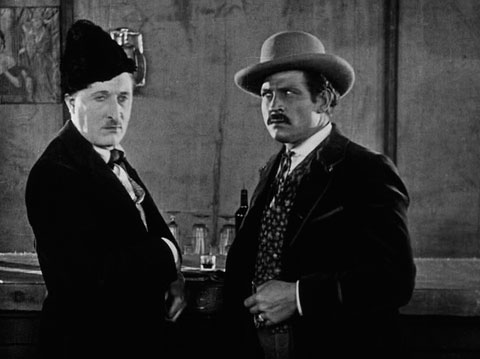This essay was originally published in Faith and Spirituality in Masters of World Cinema (2008), edited by Kenneth Morefield for Cambridge Scholars Publishing.
– – –
The main problem with narrative in film is that when you become emotionally involved, it becomes difficult to see the picture as picture. Of course, the laughing and crying and suspense can be a positive element, but it’s oddly nonvisual and gradually destroys your capacity to see.
— Michael Snow (Snow, 67)
The same moment that we are looking, we forget.
— Jean-Luc Godard (Walsh)
For experimental filmmaker Michael Snow, a viewer’s ability, literally, “to see” is of first importance. Snow came to film relatively late in life, having explored first the fields of music, painting, sculpture, and photography, and cinema for him has never been primarily a storytelling medium. Rather, he treats the foundations of film—mechanically produced light and sound moving in time—as just more artistic material. Snow’s most famous film, Wavelength (1967), for example, is essentially a 45-minute, continuous forward zoom through a New York loft, accompanied by an electronic sine wave that over the course of the film modulates gradually from its lowest frequency (50 cycles per second) to its highest (12,000 cycles per second). Wavelength deliberately rejects the traditions of narrative cinema and foregrounds, instead, the structure and mechanics of film. For Snow, then, a comparison might be made between the typical movie viewer and an impatient museum-goer, who rushes from portrait to portrait noting only the names of the historical figures represented there while overlooking completely all that distinguishes one artist’s brush or canvas from another. Artistic form vanishes amid the simpler pleasures of narrative.
Placed within the context of a discussion of faith and spirituality, Snow’s warning about the dangers of narrative cinema takes on an obvious metaphorical meaning as well. Religion is, to borrow the Evangelical parlance of the day, a “worldview,” a lens through which people of faith examine every issue before claiming a moral position, forming judgments, and acting (or choosing not to act). Snow’s demand that we see “the picture as picture” implies an attentive, active observer as opposed to a passive consumer of images. He is warning against what theologian P. T. Forsyth, in his writings on aesthetics, calls “the monopoly of the feelings,” whose aim is to move men rather than change them. For Forsyth, hardly an iconoclast himself, the error “is the submersion of the ethical element, of the centrality of the conscience, and the authority of the holy” (qtd. in De Gruchy, 74). Narrative cinema, with its seamless cutting, heroic faces, and manipulative musical cues, is particularly well-equipped to monopolize one’s feelings and co-opt one’s imagination, thus rendering the passive religious viewer pliable to anti-religious ideologies. The Soviet filmmaker Andrei Tarkovsky calls this tendency “tragic”: “if art can stimulate emotions and ideas, mass-appeal cinema, because of its easy, irresistible effect, extinguishes all traces of thought and feeling irrevocably. People cease to feel any need for the beautiful or the spiritual, and consume films like bottles of Coca-Cola” (179).
The work of Portuguese filmmaker Pedro Costa is a useful test case for a discussion of the limits of narrative cinema as a contemplative art. Without abandoning narrative altogether, Costa has over the past two decades moved progressively toward abstraction and, in the process, has discovered his own brand of what avant-garde filmmaker Nathanial Dorsky calls “devotional cinema”: “a way of approaching and manifesting the ineffable” (Dorsky, 27). In particular, Costa’s trilogy of feature films set in and around Fontainhas, an immigrant slum in Lisbon, demonstrates an increasing dissatisfaction with the tropes and traps of conventional cinematic storytelling.
In the “Vanda Trilogy,” as it has become known—Bones (Ossos, 1997), In Vanda’s Room (No Quarto da Vanda, 2000), and Colossal Youth (Juventude Em Marcha, 2006)—Costa pays homage to other spiritually-minded filmmakers such as Tarkovsky, Robert Bresson, Carl Dreyer, and Yasujiro Ozu, while also borrowing from the formal and explicitly political legacies of Jean-Luc Godard, Jean-Marie Straub, and Daniele Huillet, the latter two of whom are the subject of Costa’s 2001 documentary, Where Does Your Hidden Smile Lie? (Où gît votre sourire enfoui?). Costa’s films are infected with the same nostalgia for Modernism that characterizes so much of today’s art cinema, where the rigor of Bresson and the alienating camera of Michelangelo Antonioni threaten to inspire a new “Tradition of Quality” characterized by expressionless faces, glacial pacing, and calculated stabs at transcendence. But what distinguishes Costa from his contemporaries is his uncynical commitment to form and ethics, which are bound in his films not by transcendence but by imminence—that is, by the sacred dignity of the material, human world.
When Costa’s first feature-length film, The Blood (O Sangue), opened in 1989, it was something of an anomaly simply due to the fact that theaters in Lisbon were not at the time showing Portuguese films. Describing his and his classmates’ experience of film school in the late-1970s and early-1980s, Costa says, “there was no past at all. We knew that [Manuel] Oliviera had done Aniki Bobo (1942) and a few other things in the ‘60s. There was a guy named Paolo Rocha too, but as for the rest . . . We were not even orphans, we were the unborn” (Peranson, 9). Rather than film history, Costa’s formal training emphasized theory, as Lisbon’s Escola Superior de Teatro e Cinema was well appointed with teachers who remained caught up in the spirit of the “Carnation Revolution” of 1974. The school was also frequented by radical lecturers from France, including writers from Cahiers du Cinema. “Revolutionary tourism,” Costa calls these visits by Marxist critics and intellectuals. “It was a completely impossible situation” (8).
Costa received what he calls his real film education after leaving school. While working on various productions throughout the 1980s (“I never learned anything at all from that” [9]), he attended nightly screenings at the Lisbon cinematheque, watching complete retrospectives of the classic auteurs: John Ford, Fritz Lang, Nicholas Ray, Kenji Mizoguchi, Roberto Rossellini, Ozu, Bresson, etc. Their influence can be felt throughout The Blood, which, while stunning to look at, doesn’t quite work aesthetically or even at a basic narrative level. It’s a very personal film—the first of Costa’s many attempts to rescue on celluloid the family he was denied, personally, as a child—but its lush, romantic black-and-white photography, its Igor Stravinsky score, and its many mannered allusions to other filmmakers (Bresson, Ray, and Charles Laughton, in particular) are superimposed onto its small story of two young brothers in a manner that generates an unsatisfying tension between the narrative and form. The Blood is like a purging of Costa’s long-gestating ideas and influences and has little in common with the films that followed.
By contrast, Down to Earth (Casa de Lava, 1994) is much more assured and coherent. Costa claims to have begun the project out of anger with Portugal’s turn to the right amidst the formation of the European Union, which precipitated a dramatic restructuring of the nation’s economy, including the privitization of television. The few sources of funding in Portugal’s small film economy dried up. “I was so disgusted that I told Paolo [Branco, his producer] that if he’d give me some money I’d go to Africa and make something there,” Costa says (11). The decision would prove to be an important turning point in his career. Like a mash-up of Jacques Tourneur’s I Walked with a Zombie (1943) and Claire Denis’s Chocolat (1988), Down to Earth concerns a young woman, Mariana (Ines de Medeiros), whose exotic notions about the Other are tested and refuted by first-hand experience. Wishing to escape the mundane, lonely existence of her daily life as a nurse in a Lisbon hospital, Mariana escorts an immigrant patient back to Cape Verde, the former Portuguese colony off the west coast of Senegal.
Any illusions Mariana has about the romantic allure of Cape Verde are challenged, however, from the moment she arrives there. Dropped off in a barren field by helicopter, she finds herself alone with her patient’s still-comatose body. And when she does finally make her way to the local medical clinic, she’s frustrated to discover a general apathy about her patient’s condition. It’s the first of many such scenes in which Mariana misinterprets the behavior of those around her. She is forever asking the Cape Verdeans to speak in Portuguese rather than Creole. “I don’t understand you,” she repeats again and again. Like so much Post-Colonial art, Down to Earth explores the various ways in which meaning is interpreted and reconstructed by competing powers.
Down to Earth, an impressive film in its own right, also sets the stage for the “Vanda Trilogy.” Costa’s experience with the people of Cape Verde gained him access to the poor immigrant communities in Lisbon that continue to be his principal subject. But Down to Earth also introduces several formal touches that have become hallmarks of Costa’s style. The film opens in complete silence as we watch the simple white-on-black credits, followed by a montage of volcanoes. It’s found footage, presumably, but Costa’s syncopated cutting turns it strange and abstract. Music enters at the two-minute mark, and it’s likewise complex and counter-rhythmic, a viola sonata by Paul Hindemith. Its atonal bursts of dissonance disturb the beauty of the nature sequence, but the piece also alludes to High Modernism and acknowledges the camera’s “outsider” perspective. This film about Cape Verde is the work of a Portuguese director and a European economy, and it would certainly find its largest audiences among First World festival-goers and cineastes.
Costa next cuts together a montage of iconic portraits. He frames the women of Cape Verde in close-up, shooting their hands, the backs of their heads, and, most often, their expressionless faces. The women share several particular traits: thick eyebrows, pronounced cheekbones, freckles, and wisps of hair on their upper lips. They have centuries of colonialism, slave trade, and miscegenation written into their DNA. Then, in the closing seconds of the sonata, Costa cuts again, this time to a construction site in Lisbon, where several Cape Verdean men are working. It’s a remarkable feat of filmmaking. In less than three-and-a-half minutes Costa has established the central conflict of the film—that is, the perilous relationship between colonizer and colonized and the complex history (economic, political, cultural, and familial) they continue to share—and he’s also implicated himself and the audience in that history.
In the “Vanda Trilogy,” Costa continues to evolve his use of elliptical editing and static close-ups, but as he gradually moves away from standard narrative forms he also begins to experiment more conspicuously with sound design and mise-en-scene. Bones opens with another of Costa’s icon-like portraits, this time a forty-second, mostly-silent medium shot of a nameless young woman who is barely visible amid the shadows of an underlit room. The film is set in the Fontainhas district of Lisbon, a claustrophobic place where people wander into and out of rooms and seldom, if ever, find a space where they can be alone. Even the most intimate of experiences (sex, an attempted suicide) are observed directly by others or are intruded upon, psychologically, by the constant, low-frequency hum of neighborhood arguments, music, and crying children. Because Costa never gives us a top-down perspective of Fontainhas—because he never establishes a navigable geography—we get lost there, too. There’s little direct sunlight, even in the few scenes shot during daytime, and the narrow alleyways between buildings are like paths through a hedgerow labyrinth.
All of this is significant because Costa establishes a stark dichotomy between Fontainhas and the middle-class districts where one of the main characters goes to clean apartments. The dank, congested din of slum life seems a world away from her employers’ white-walled flats. And given Costa’s elisions, it’s impossible to situate either district in a real geographic space: they might be a world away; they might be right next door. Costa’s approach to his subject creates a dialectic of sorts, as he accomplishes more than simply reminding us—in a pat or comforting way, as a traditional narrative would inevitably do—of the differences between the haves and have-nots. Rather, he has set these two worlds in direct opposition to one another. Or, more to the point, he’s developed a cinematic form that arises, organically, out of an already-existing (in the real word) and material opposition.
By comparison to the two films that would follow, Bones has a relatively traditional plot. A teenage girl has given birth to a child that she and the baby’s father are unable and unwilling to raise. Three women attempt to come to the couple’s rescue: Clotilde (Vanda Duarte), a neighbor who works as a house cleaner; Eduarda (Isabel Ruth), a middle-class nurse who treats the child in hospital; and an unnamed prostitute (Ines de Medeiros) who offers to raise the baby herself. Like Mariana in Down to Earth, all of the women in Bones are lonely and in search of love, security, and some kind of domestic pleasure. Particularly given Costa’s use of several non-professional actors and his determination to shoot the film on location, the subject matter of Bones is potentially exploitative. The danger is that it could become one of those unsentimental, “fly on the wall” films that tend to be commended by liberal Western audiences for their access into “a world seldom seen on-screen.” Tahani Rached’s These Girls (El-Banate Dol, 2006) is a fitting example. Rached’s film is a well-intentioned and unsettling documentary about the street girls of Cairo who spend their days huffing glue, avoiding arrest, and suffering violence at the hands of men and each other. In her attempt to remain objective and to strip away her authorial voice, however, Rached has made a film that is as ephemeral, emotionally and morally speaking, as a “Feed the Children” television commercial. Both stoke the audience’s guilt with provocative images of suffering but offer precious little analysis. Rached’s film ends up functioning much like a typical Hollywood entertainment or TV show. These Girls, in fact, is sentimental, but it appeals to sentiments like pity and shame.
Such sentiments are easily elicited by even incompetently constructed narrative images. Soon after the release of his film For Ever Mozart (1996), which concerns, in part, the Bosnian War, Jean-Luc Godard was asked if he felt Western governments had made use of televised images of suffering in order to promote their political agendas. “Yes, of course,” he replied. “We made images in the movies, when we began, in order to remember. TV is made to forget. We see Sarajevo, okay, we forget in two seconds. The same moment that we are looking, we forget” (Walsh). If cinema is to have value as a contemplative art then it must, as Snow suggests, teach us “to see,” and it must do so in a manner that avoids reducing the image to gross propaganda. “Beauty has been redefined to serve commercial and ideological ends,” writes theologian John W. De Gruchy in Christianity, Art and Transformation: Theological Aesthetics in the Struggle for Justice. “This abuse of art does not necessarily reflect a lack of aesthetic sensibility; rather it manipulates it to great effect because people do not have the ability to evaluate its character or consequence” (92). For De Gruchy, art must instead serve a prophetic function by “disrupt[ing] and destabiliz[ing] dominant portrayals of reality and, in turn, offer[ing] alternative perceptions of reality.” Contemplative art, De Gruchy argues, offers historical analysis, it imbues the contemplative viewer with empathy, it unmasks hypocrisy, and it evokes hope that compels action (200-01).
The material of cinema poses particular problems in this regard, however, as commercial interests have proven remarkably adept at consuming images, narrative tropes, and editing techniques—no matter how Modern and defamiliarizing they might have once seemed—and regurgitating them into our visual culture. (Prime time television, especially during commercial breaks, now regularly broadcasts images that until very recently would have seemed avant-garde.) Made nearly a decade after For Ever Mozart, Godard’s Our Music (Notre Musique, 2004) revisits Sarajevo and again questions our capacity to ignore and even enjoy the suffering of others, this time by subjecting viewers to “Hell,” an intensely visceral, ten-minute collage of newsreel war footage and violent film clips. With “Hell” Godard seems resigned in his anger, as if he’s whispering a cynical challenge to every viewer: “I know that you will forget all of this too.”
Discussing Down to Earth, Costa suggests that he shares Godard’s concerns about the epistemological instability of filmed images: “I set out to make an angry film about prisoners in Africa but then the Romanesque took over” (Peranson, 11). Presumably, by “Romanesque” he’s referring to the Gothic elements in the film—the sublime landscapes, haunted glances, and romantic entanglements that are conspicuously absent from his later work. What’s interesting about his comment, though, is his admission that he was, in a sense, helpless to prevent the formal components of his film from “taking over” and reshaping its content. With Bones, Costa begins to strip away all such elements that might fall too easily into convention. There are hints of this even in Down to Earth. For example, at the midpoint of the film he cuts together three close-ups of locked doors and floods the soundtrack with crying children, creating an ambiguous disunity between the sound and image. This approach is extended throughout Bones, in which the life of Fountainhas is represented predominantly by the offscreen sounds it makes. It’s an effective gesture toward Bresson, who, in Notes on the Cinematographer, writes, “When a sound can replace an image, cut the image or neutralize it. The ear goes more toward the within, the eye toward the outer” (51).
As many commentators have noted, Bresson’s use of sound functions metaphorically, representing the natural world just beyond the limits of the country priest’s experience, for example, and equating Mouchette’s plight with that of the partridges poached by Arsene. But Bresson’s sound design also creates a hard, physical reality. Every inhabitant of Fountainhas is like Fontaine, the heroic prisoner in Bresson’s A Man Escaped (Un condamné à mort s’est échappé, 1956), whose determined attention to every passing sound renders the outside world in sharp clarity. When asked why he so often underlit the faces of his actors in A Perfect Couple (Un Couple Parfait, 2005), Japanese filmmaker Nobuhiro Suwa responded, “There are two ways to really watch. One is to open your eyes and look closely; the other is to close your eyes and imagine.” Consumers of traditional narrative cinema are seldom required to do much of either, however, as the combined effect of continuity editing, high-key lighting, emotive acting, and on-the-nose dialogue skillfully conspires to eliminate any potential confusion or ambiguities from the story being told. Viewers of Costa’s films, like those of Bresson and Suwa, are expected to stay alert and attentive, while also remaining free, like readers of great fiction, to participate in the imaginative act of world- and character-creation.
A telling example of Costa’s formal strategy comes early in Bones. The young mother and father share only one scene in the entire film, a strange and wordless encounter marked by exactly the kinds of ambiguities seldom found in narrative cinema. First, we see the girl and boy separately. Tina (Mariya Lipkina), having just been released from the hospital, carries home her newborn son, lays him on the couch, shutters the windows, and opens the valve of a gas tank that she has dragged in from the kitchen. Along with the muffled sounds of neighbors, we also now hear the hiss of escaping gas, as Tina takes a seat beside her fidgeting child and closes her eyes. Costa then cuts to the nameless father (Nuno Vaz), who is wandering alone through Fontainhas. When he eventually arrives at Tina’s home, he finds her and the child lying motionless on the couch. Recalling both Pier Pasolini’s rendering of Christ in The Gospel According to St. Matthew (Il Vangelo Secondo Matteo, 1964) and Carl Dreyer’s portrait of Joan of Arc (La Passion de Jeanne d’Arc, 1928), Costa then frames the boy in an extended close-up as he examines and contemplates the scene around him. Silently and without expression, he walks past the couch and into another room, where he collapses in Tina’s bed. He remains alone there for a moment until she comes to his side, wrestles him to the floor, and drags him by his shoulders into the room where their sleeping child lies. The sequence is capped by a cutaway to another iconic portrait of the unnamed woman from the opening shot of the film, who stares into the distance like a silent witness.
By conventional standards, this sequence, which includes an attempted suicide and infanticide, is relatively undramatic. Even the moment when Tina releases the gas and closes her eyes is more curious than horrific. The low-level lighting shrouds her face, and Lipkina’s performance is completely without affect. Likewise, when the young father surveys the scene, his response is vague and puzzling. Tina and the child are dead, we’re led to assume, so his decision to walk past them into the bedroom seems inhumanly callous. But then Tina comes to the door, and we’re forced to reevaluate all of those assumptions. Did she change her mind or did the tank simply run out of gas? Did he know they were sleeping, and, if so, was he actually being courteous rather than callous? Is he devastated by or indifferent to Tina’s suicidal tendencies, whether successful or not?
These ambiguities are amplified when Tina comes to him on the bed and embraces him. Shot in near-complete darkness and from a fixed camera position a few feet away, the scene is a fierce battle—at once intimate, tragic, sorrowful, and bitter. When most films would explode with tears and exposition, Bones instead becomes even more quiet. Rather than fight back, the father goes limp when Tina grabs him, pulls him to the floor, and tugs him to the other room. His final gesture—hiding his face behind one arm and turning away from Tina and their child—is selfish and cowardly but also an emblem of his shame and helplessness.
The temptation with such a scene is to fix each character and movement within a symbolic framework. This young couple, for example, might be casually interpreted as one more artistic instantiation of Joseph and Mary. But Costa’s style deliberately resists such facile handling. Rather, like the poetic logic of Tarkovsky’s enigmatic images, Costa’s films give “the beholder a simultaneous experience of the most complex, contradictory, sometimes even mutually exclusive feelings” (Tarkovsky, 109). Costa’s mise-en-scene is Brechtian as well as Tarkovskian, alluding to other figures of immanence such as Christ and St. Joan but doing so by way of mannered gestures that keep viewers at a disconcerting emotional and intellectual remove. This is a human, material world that Tina and the young father inhabit, and Costa reminds us of this by representing their battle through only the mundane sounds of rustling clothes, a thumping body, and dragging shoes.
Even when Costa finally cuts to a reverse angle from beside the child and we can again see the young couple in higher-key light, their motivations remain cryptic. Tina slumps against the wall, exhausted by the effort and by life, generally, while he lies motionless on the floor with his face hidden from view. By focusing his camera on his actors’ bodies rather than shining a spotlight (whether literal or metaphoric) on their emotional states or back-stories, Costa short-circuits the conventional viewing experience and thus forces the audience into a position of active and curious engagement, which leads, ideally, to empathy and analysis rather than sympathy or, worse, self-satisfying judgment.
Costa’s final cut in the sequence, from the image of the mother, father, and child to a close-up of the nameless woman, anticipates his next feature film, In Vanda’s Room. The cut functions as an eyeline match, implying that this mysterious woman has done the impossible: witness directly Tina’s suicide attempt and the intimate battle that followed. It also implies that she witnessed the events but would not or could not intervene. While the story of Bones might be conveniently reduced to a kind of ambiguous fable—a moral tale about desperate, lost children in search of a mother, or a tragic parable of poverty—In Vanda’s Room throws off narrative conventions to such an extent that it comes to question, finally, the limits of narrative itself. Like Andy Warhol’s structuralist experiments of the 1960s—films like Empire (1964), which consists of a single, eight-hour shot of the Empire State Building—In Vanda’s Room challenges the viewer to ask: What is dramatic? What is the relationship between real life and “reel life”? And what are the ethical implications of our role as passive cinematic spectator?
According to Costa, work on In Vanda’s Room began soon after the completion of Bones, when one of the actresses, Vanda Duarte, suggested that they could make a different kind of film together. What began as “the worst documentary ever made” (or so says the director), evolved gradually over two years of shooting into an intimate fiction film (in the loosest sense of the word) about the looming destruction of community in Fontainhas (Peranson, 13). Shot with small digital video cameras and a bare-bones crew, In Vanda’s Room is strikingly different from the films that preceded it. The opening scene is a long, static shot of Vanda and her sister, Zita, sitting together on their bed, talking, coughing, and smoking heroin. Both are full-blown addicts, as are most of the other residents of Fontainhas who we meet throughout the course of the film. Costa offers glimpses of the small dramas that determine their lives—Vanda sells vegetables door-to-door, another of her sisters is arrested for shoplifting, her friend Nhurro moves from vacant apartment to vacant apartment in search of a home—but the majority of the film’s three-hour run time is devoted to scenes like the first one: formally-simple, extended takes filmed in confined spaces that capture the mundane details of life in this Lisbon slum.
Despite Costa’s formal rigor, however, In Vanda’s Room remains an emotionally arresting experience. Its avoidance of the sentimentalizing traps that ensnare These Girls is due largely to his disciplined concentration—even moreso here than in Bones—on the bodies of his actors. In Devotional Cinema, Nathaniel Dorsky writes: “If you have ever looked at your hand and seen it freshly without concept, realized the simultaneity of its beauty, its efficiency, its detail, you are awed into appreciation. The total genius of your hand is more profound than anything you could have calculated with your intellect. One’s hand is a devotional object” (38).
For Dorsky, too many filmmakers mistakenly ignore the holy inscrutability of natural objects and instead force upon them calculated, symbolic meanings. He supports his argument by analyzing the closing sequence of Ozu’s first sound film, The Only Son (1936), in which a mother and her adult child, both of them sorrowfully disappointed by the paths their lives have taken, sit side-by-side in the grass, looking occasionally to the sky before walking off together across a field. Dorsky concludes, “There is no summation to all these elements, only the direct experience of poetic mystery and the resonance of self-symbol” (40). Like Ozu, whose films, typically, are modest family dramas, Costa aspires toward a kind of radical domestic cinema with In Vanda’s Room. Rather than Dorsky’s hand, the objects of devotion here are Zita’s tired eyes, Nhurro’s hunched shoulders, Vanda’s rasping, hollow cough, and any number of other deep-lined faces and needle-injected forearms we witness along the way. Because Costa never cuts within a scene, and because the camera position remains fixed in the most practical position (rather than the most dramatic or conventionally cinematic), we are, again, allowed the freedom to explore Fontainhas and its residents on our own.
By gradually transforming the characters of In Vanda’s Room into objects of contemplation, Costa also transforms Fontainhas itself into a sacred community whose imminent destruction is cause for mourning. Early into the making of the film, demolition crews began to literally tear down the neighborhood and relocate its inhabitants into new tenement high-rises. Costa intercuts the day-to-day lives of Vanda and her family with demolition scenes, and Nhurro’s constant moves, from vacant room to vacant room, signify the very real threat facing them all. The penultimate shot of the film echoes the first, as we see Vanda and Zita again smoking heroin in their room, but this time Costa fills the soundtrack with the noxious noise of approaching bulldozers and wrecking balls.
This grounding of his aesthetic in a specific historical moment points to another important aspect of Costa’s project. While his formal strategy transforms the material of his filmed world into devotional objects, they remain “material” in the Marxist sense as well. In Vanda’s Room patiently describes the life of a drug addict, for example, not as a high-stakes game between dealers, junkies, and police, as is the case with most films and television shows, but as the inevitable byproduct of an economic system that exploits and excludes its inessential members. “After the Portuguese ‘discovered’ India in the 16th century,” Costa says, “we became unemployed forever: unemployment, poverty, and sadness. . . the worst capitalist exploitation” (Peranson, 14). Or, as one character puts it in the film, “We’re unemployed, but that’s work.”
This melding of immanence and the political becomes even more pronounced in the third Vanda film, Colossal Youth, which finds Costa moving cinematographically toward an exaggerated Brechtian abstraction that recalls the films of Straub and Huillet. The signature image of Colossal Youth is a low-angle shot of Ventura, the film’s protagonist. He is an elderly man, tall and thin, and in this particular image, we see little of his face—just one eye peering over his right shoulder. The shot is dominated, instead, by the severe lines and sharp angles of a newly-constructed, State-funded high-rise that blots out the sky behind him. Costa cuts first to the building, which hangs in space like a two-dimensional painted backdrop, and pauses there for a few seconds, allowing our eyes to adjust to the sudden brightness before Ventura enters the frame. The light is so cool and clear and the contrast so high that all of the contours in Ventura’s black suit are lost and he is likewise rendered in two dimensions. Only his expressionless face has depth and shadow and, thus, appears “real.” Otherwise, the image could be mistaken for a work of cubism.
Colossal Youth begins where In Vanda’s Room left off. The last remaining buildings in Fountainhas are coming down, and nearly all of the residents, including Vanda, have been removed to Casal Boba, a suburban housing development, where they enjoy relatively healthy living conditions and benefit from State-subsidized healthcare and social programs. Though still plagued by her cough, Vanda has gotten clean thanks to methadone treatments and is living with a kind man and raising a daughter. She looks different now. Her trademark long hair has been trimmed and she’s gained weight. She makes several appearances in the film, most of which take place in her new bedroom, where she watches television and recounts stories to Ventura. As in In Vanda’s Room, Costa shoots these episodes in long, uninterrupted takes from a fixed camera position, which emphasizes the stark contrast between the decrepit but organic-seeming environs of Fontainhas and the institutional brightness of Casal Boba.
Costa’s intent in Colossal Youth is to tell “the history that nobody has yet told,” the story of the immigrants of Ventura’s generation who were lost in the shuffle of Portugal’s transformation in the mid-1970s from a dictatorship to a liberal democracy (McDougall, “Youth”). Ventura is a ghost-like figure in the film who moves back and forth through time. In some scenes we find him holed up in a work shed with his young friend Lento while the “Carnation Revolution” of April 25, 1974 rages around them; in others we are back in the present day, watching as Ventura relocates from Fontainhas to an apartment in Casal Boba large enough for all of “his children.” Costa offers no explicit clues to explain or demarcate these shifts in time, and even the basic past/present divide breaks down near the end of the film, when Lento, who has long since been dead, visits Ventura in his new home.
These elisions and Surrealist touches are another source of ambiguity that offer ethical instruction. Dorsky notes that we actually experience life as a series of elisions. (Turn your head quickly to one side and, rather than a seamless pan, you will see several rapid jumpcuts.) Therefore, the montage of devotional cinema must also “present a succession of visual events that are sparing enough, and at the same time poignant enough, to allow the viewer’s most basic sense of existence to ‘fill in the blanks.’ If a film fills in too much, it violates our experience” (31). By the same token, Amy Elias, drawing on postmodern theorists Ihab Hassan and Hayden White, finds deeply imbedded political implications in similar narrative techniques that hearken to parataxis, a rhetorical strategy that avoids connectives between words—“I left. She cried.” as opposed to hypotaxis, “When I left, she cried” (123). In Colossal Youth, Costa has divided the world into past and present and has populated both with devotional objects. Rather than mouthing a didactic tract, however, he has discovered a political force in that poetic juxtaposition, like lines in a haiku. Ventura’s poignant recitation of a love letter to his wife in the past collides with the image of him standing alone in his sterile new home in the present, and in that frisson Costa achieves a hard-earned critique of historical “progress” and the economic systems that determine its course. “Filming these things the way I did does not put much faith in democracy,” Costa has said. “People like Ventura built the museums, the theaters, the condominiums of the middle-class. The banks and the schools. As still happens today. And that which they helped to build was what defeated them” (McDougall, “Youth”).
Critic David McDougall has identified in Costa’s films—and in Colossal Youth, particularly—a sense of what Portuguese speakers call “saudade,” which translates roughly as “nostalgia” but is more anguished and rooted in the present moment, as if longing for one’s life while living it (“Saudade”). Saudade is simultaneously tragic, anxiety-causing, and curiously pleasurable, as it reminds one of all that was lost while suggesting a hope for its eventual return. That Costa’s films manage to provoke a feeling of saudade within viewers as well is perhaps the best testament to their truly being works of contemplative art. The “Vanda Trilogy” is almost completely devoid of overt allusions to faith, spirituality, or organized religion of any sort, yet the films overflow with what Dietrich Bonhoeffer, borrowing a metaphor from music, calls the “cantus firmus”—a foundational value or belief “to which the other melodies of life provide the counterpoint” (161).
Works Cited
Bonhoeffer, Dietrich. Letters and Papers from Prison, The Enlarged Edition. Ed. by Eberhard Bethge. London: SCM Press, 1971.
De Gruchy, John W. Christianity, Art and Transformation: Theological Aesthetics in the Struggle for Justice. Cambridge: Cambridge UP, 2001.
Dorsky, Nathaniel. Devotional Cinema. Rev. ed. Berkeley: Tuumba Press, 2005.
Elias, Amy J. Sublime Desire: History and Post-1960s Fiction. Baltimore: Johns Hopkins UP, 2001.
Hanlon, Lindley. “Sound as Symbol in Mouchette.” Robert Bresson. Ed. by James Quandt. Toronto: Cinematheque Ontario Monographs: 307-23.
McDougall, David. “Saudade and Colossal Youth.” 2 June 2007. Chained to the Cinematheque. 2 Jan. 2008. < http://chainedtothecinematheque.blogspot.com/2007/05/saudade-and-colossal-youth.html>.
– – -. “Youth on the March: The Politics of Colossal Youth.” 15 May 2007. Chained to the Cinematheque. 2 Jan. 2008. < http://chainedtothecinematheque.blogspot.com/2007/05/ youth-on-march-politics-of-colossal.html>.
Peranson, Mark. “Pedro Costa: An Introduction.” Cinema Scope Summer 2006: 6-15.
Snow, Michael. Interview. A Critical Cinema 2: Interviews with Independent Filmmakers. Ed. Scott MacDonald. Berkeley: U of California P, 1992: 51-76.
Suwa, Nobuhiro. Question and Answer Session. Toronto International Film Festival, Toronto. 16 Sept. 2005.
Tarkovsky, Andrei. Sculpting in Time: Reflections on the Cinema. Trans. Kitty Hunter-Blair. Austin: U of Texas P, 1998.
Walsh, David. “Those Who ‘Play at Life and Death’: Jean-Luc Godard’s For Ever Mozart.” 2 Dec. 1996. World Socialist Web Site. 2 Jan. 2008. < http://www.wsws.org/arts/1996/dec1996/god-d96.shtml>.
